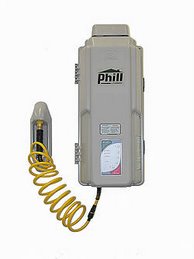Saturday, May 26, 2007
SECO: McKinney ISD
Sustainable Elementary School Design Demonstration Projects
.
Studies have shown that schools incorporating passive solar features, such as daylighting, use less energy, student grades have improved, and attendance is higher.
.
- Energy Smart Schools
.
According to a study conducted by the Alberta Department of Energy in Canada, students benefited significantly from attending schools where daylight, rather than traditional artificial lighting, was the principal source of internal lighting. The study found that students enrolled in schools where daylighting was prevalent exhibited among other things: reduced absenteeism by 3.5 days per year, increased concentration levels, a significant reduction in library noise, better scholastic performance and more positive moods induced by natural light.
.
- McKinney ISD
.
The Roy Lee Walker Sustainable Elementary School project is a prototype design commissioned by the State Energy Conservation Office of Texas (SECO) to be one of the first sustainable school projects in the state. The school's design incorporates many environmentally friendly design principles, including rainwater collection, day lighting, wind energy, solar energy, the use of recycled building materials, outdoor teaching spaces, water habitat and landscaping sensitivity. Finally, the design fosters "Eco Education," a term that describes the incorporation of environmentally sound facility design into the school's own educational curriculum.
.
The Roy Lee Walker Elementary School was completed in July, 2000, and opened for school in August, 2000. The photos were taken during and after construction, between December 1, 1999, and August 17, 2000. The American Institute of Architects named this school to the Earth Day Top 10 List for Environmentally Responsible Design Projects. The district is currently using sustainable design for their next two elementary schools.
.
The McKinney district built another elementary school, Wolford Elementary School, which also opened in August, 2000. The school was based on the design used for the previous 7 elementary campuses in the district, and will provide us with an excellent comparison for both the energy and educational impacts of the sustainable design.
.
The sustainable building practices at Roy Lee Walker Sustainable Elementary School include: building siting and orientation; optimizing natural lighting, providing for task lighting and specifying high-efficiency electric lighting; establishing an energy budget for each project; specifying locally or regionally produced products; designing to minimize cut-off waste and providing for recycling during construction; specifying materials and finishes with low or no volatile organic compound emissions and providing adequate ventilation; considering energy, water, materials consumption, transportation and impacts on natural systems when selecting products and materials; minimizing impervious surface and providing infiltration and retention of storm water; landscaping with native vegetation; and looking for opportunities to provide shelter or habitat for compatible species as well as to restore waterways, vegetation and habitats.
.
Studies have shown that schools incorporating passive solar features, such as daylighting, use less energy, student grades have improved, and attendance is higher.
.
- Energy Smart Schools
.
According to a study conducted by the Alberta Department of Energy in Canada, students benefited significantly from attending schools where daylight, rather than traditional artificial lighting, was the principal source of internal lighting. The study found that students enrolled in schools where daylighting was prevalent exhibited among other things: reduced absenteeism by 3.5 days per year, increased concentration levels, a significant reduction in library noise, better scholastic performance and more positive moods induced by natural light.
.
- McKinney ISD
.
The Roy Lee Walker Sustainable Elementary School project is a prototype design commissioned by the State Energy Conservation Office of Texas (SECO) to be one of the first sustainable school projects in the state. The school's design incorporates many environmentally friendly design principles, including rainwater collection, day lighting, wind energy, solar energy, the use of recycled building materials, outdoor teaching spaces, water habitat and landscaping sensitivity. Finally, the design fosters "Eco Education," a term that describes the incorporation of environmentally sound facility design into the school's own educational curriculum.
.
The Roy Lee Walker Elementary School was completed in July, 2000, and opened for school in August, 2000. The photos were taken during and after construction, between December 1, 1999, and August 17, 2000. The American Institute of Architects named this school to the Earth Day Top 10 List for Environmentally Responsible Design Projects. The district is currently using sustainable design for their next two elementary schools.
.
The McKinney district built another elementary school, Wolford Elementary School, which also opened in August, 2000. The school was based on the design used for the previous 7 elementary campuses in the district, and will provide us with an excellent comparison for both the energy and educational impacts of the sustainable design.
.
The sustainable building practices at Roy Lee Walker Sustainable Elementary School include: building siting and orientation; optimizing natural lighting, providing for task lighting and specifying high-efficiency electric lighting; establishing an energy budget for each project; specifying locally or regionally produced products; designing to minimize cut-off waste and providing for recycling during construction; specifying materials and finishes with low or no volatile organic compound emissions and providing adequate ventilation; considering energy, water, materials consumption, transportation and impacts on natural systems when selecting products and materials; minimizing impervious surface and providing infiltration and retention of storm water; landscaping with native vegetation; and looking for opportunities to provide shelter or habitat for compatible species as well as to restore waterways, vegetation and habitats.
Subscribe to:
Post Comments (Atom)









1 comment:
Are there any other Independant School Districts using passive lighting? What are the cost/benfit trade offs for such illumination and air conditioning load alterations?
Post a Comment